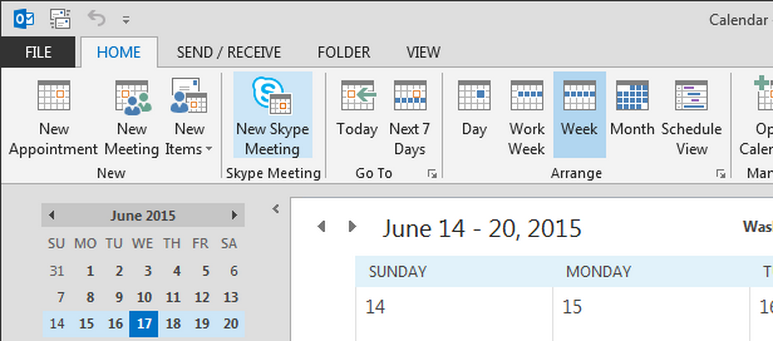


However, note that existing Teams meeting join links won't be migrated to Skype for Business. If you set the parameter to Teams, and then switch back to TeamsAndSfB, both meeting add-ins are enabled. This policy setting doesn't affect presence, chat, PSTN calling, or any other capabilities in Skype for Business, which means that users will continue to use Skype for Business for these capabilities.
#Skype meeting in outlook update
After you finish making changes, click Save & Close for an appointment or Send Update for a meeting. If you add attendees, the appointment turns into a meeting. Now that the event is an appointment, the Show As changes to Busy. It doesn't migrate existing Skype for Business meeting join links to Teams. Uncheck the All day event checkbox next to the Start time. This policy setting ensures that all future meetings have a Teams meeting join link. Set the parameter to Teams to enable only the Teams Meeting add-in in Outlook.

Set the parameter to TeamsAndSfB to enable both the Teams Meeting add-in and Skype for Business add-in in Outlook. To specify which meeting add-in you want to be available to users, set the PreferredMeetingProviderForIslandsMode parameter as follows: Or, create a new Teams meeting policy by using the New-CsTeamsMeetingPolicy cmdlet and assign it to users. You can edit an existing Teams meeting policy by using the Set-CsTeamsMeetingPolicy cmdlet. You can only apply this policy to users who are in Islands mode and have the AllowOutlookAddIn parameter set to True in their Teams meeting policy.Ĭurrently, you can only use PowerShell to set this policy. You can specify whether users can only use the Teams Meeting add-in or both the Teams Meeting and Skype for Business Meeting add-ins to schedule meetings in Outlook. This setting controls which Outlook meeting add-in is used for users who are in Islands mode.


 0 kommentar(er)
0 kommentar(er)
